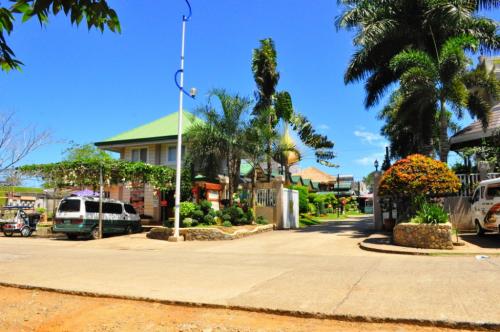

The City of Cebu is the capital city of Cebu in the Philippines, and is the second most significant metropolitan center in the Philippine Islands. The city is located on the eastern shore of Cebu, and is the first Spanish settlement in the Philippines.
Cebu is the Philippines' main domestic shipping port, and is home to more than 80% of the country's domestic shipping companies. Cebu also holds the second largest international flights in the Philippine Islands, and is a significant center of commerce, trade, and industry in the Visayas, and Mindanao region. According to the 2007 Philippine census, the city has a population of 798,809 people.
Cebu City is the center of a metropolitan area called Metro Cebu, which includes the cities of Mandaue, Lapu-Lapu, Talisay, Naga. Metro Cebu has a total population of about 2 million people. The Mactan-Cebu International Airport, located in Lapu-Lapu City is only a twenty-minute drive away from Cebu City.
To the northeast of the city are Mandaue City, and the town of Consolacion, to the west are Toledo City, the towns of Balamban, and Asturias, to the south are Talisay City, and the town of Minglanilla. Across Mactan Strait to the east is Mactan Island where Lapu-Lapu City and an aquarium attraction are located.
Cebu city is an important cultural center in the Philippine Islands. The city's most famous landmark is Magellan's Cross. This cross, now housed in a chapel, was supposedly planted by Ferdinand Magellan when he arrived in the Philippine Islands in 1521.
A few steps away from the Magellan's Cross is the Basilica Minore del Santo Niño (Church of the Holy Child), an Augustinian church which was elevated to the rank of church in 1965 during the 400th year celebrations of Christianity in the Philippines, held in Cebu.
The City's religious festival, Sinulog Festival, held every third Sunday of January which celebrates the festival of the Santo Niño, the patron saint of Cebu. The Sinulog is a dance ritual of pre-hispanic indigenous origin. The dancer moves two steps forward and one step backward to the rhythmic sound of drums. This movement resembles somewhat the current (sulog) of the river. Thus, the Cebuanos called it Sinulog.
When the Spaniards arrived in Cebu, the chronicler, Antonio Pigafetta, sailing under convoy with the Magellan expedition, offered, as a baptismal gift, to Hara Amihan, wife of Rajah Humabon, and later named Juana, the image of the Santo Niño. The natives likewise honored the Santo Niño de Cebu in their indigenous Sinulog ritual. The Sinulog ritual was preserved but limited to honoring the Santo Niño. Once the Santo Niño church was built in the 1500s, the christian natives started performing the Sinulog ritual in front of the church, the devotees offering candles, and the native dancers shouting "Viva Pit Señor!" (Hail Mister).
In the 1980s and 2000s, the city authorities of Cebu made the Sinulog Festival part, and parcel of the religious feast of the Santo Niño de Cebú to its cultural event.
Source: